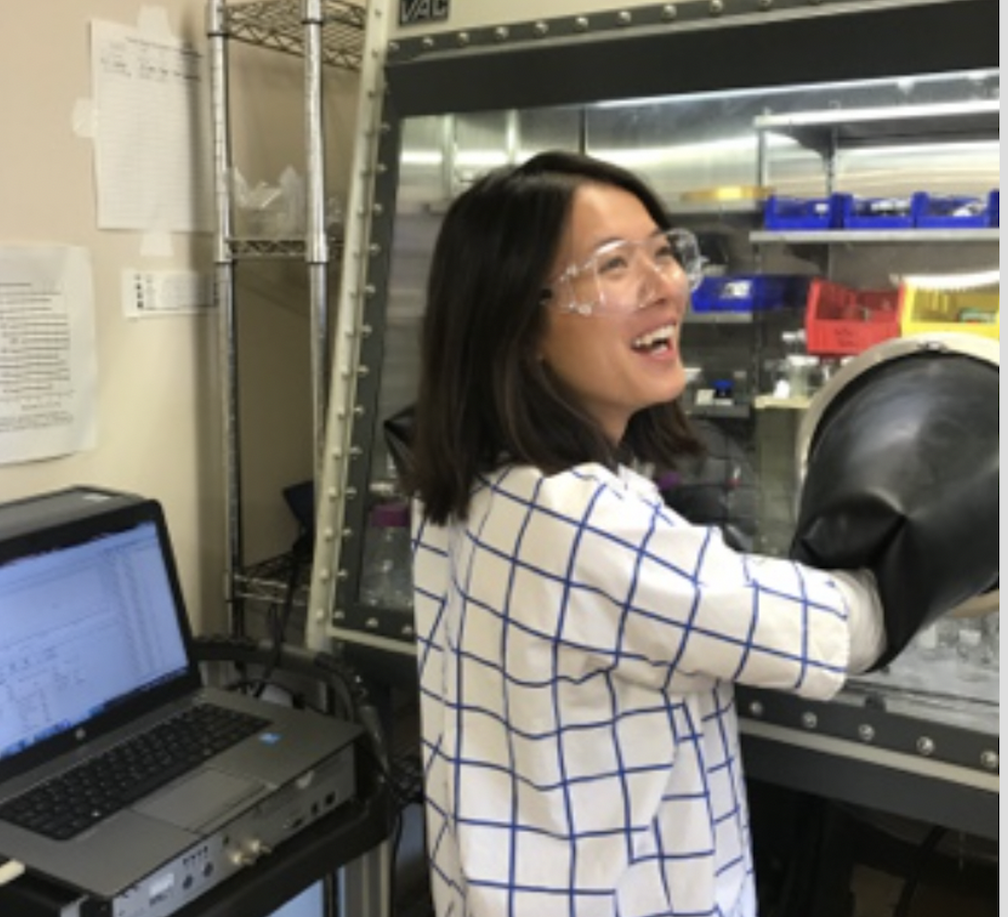By: Keying Chen
Hi! I’m Keying, a second year graduate student working in Dr. Smaranda Marinescu’s group in the Department of Chemistry at USC.
As we all know, the efficient use of renewable energy sources (such as solar and wind energy) is largely limited by their intermittent nature. One promising strategy to address this problem is to store these forms of energy in chemical bonds. This can be done through electrochemical processes, such as water splitting and CO2 reduction.

This is me, working in the glovebox of our lab! Our material is air-sensitive, so it has to be handled in a nitrogen atmosphere.
These difficult electrochemical transformations require highly efficient eletrocatalysts, which is where the research of our group comes into play: We develop efficient and earth-abundant (inexpensive) eletrocatalysts for energy-related conversion processes.
My research specifically focuses on the development of electrocatalysts for the hydrogen evolution reaction (HER: 2H+ + 2e– H2). HER represents one half of the water splitting reaction. The product, hydrogen or H2, has been proposed as a clean, carbon-neutral energy carrier.
This summer, as a Sonosky Fellow, I’ve been working on testing the electrochemical HER activity of a cobalt dithiolene MOF (metal-organic framework) material, constructed by incorporating cobalt bisdithiolene units into an extended framework. The activity of the material is tested using a three-electrode setup, with acidic solutions as the electrolyte. The material displays a high current output within the experimental potential window and a Faradaic efficiency of 98% – meaning, the experimental results are promising!

Left: the synthesis of our material (black film) through an interfacial reaction; middle: the three-electrode setup for activity testing; right: me setting up the electrochemical cell in the fume hood.
Currently, I’m still trying to understand the performance of the material from a mechanistic standpoint. The mechanism of the reaction tells us how the reaction is carried out on the surface of our catalyst. Only by understanding this can we then rationally improve the performance of our material for renewable energy storage.
